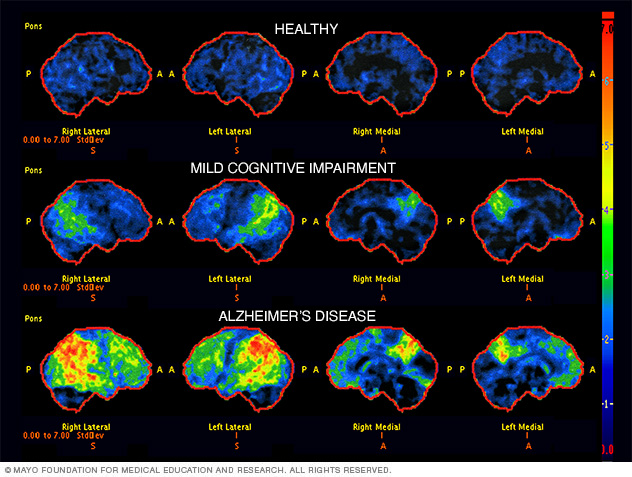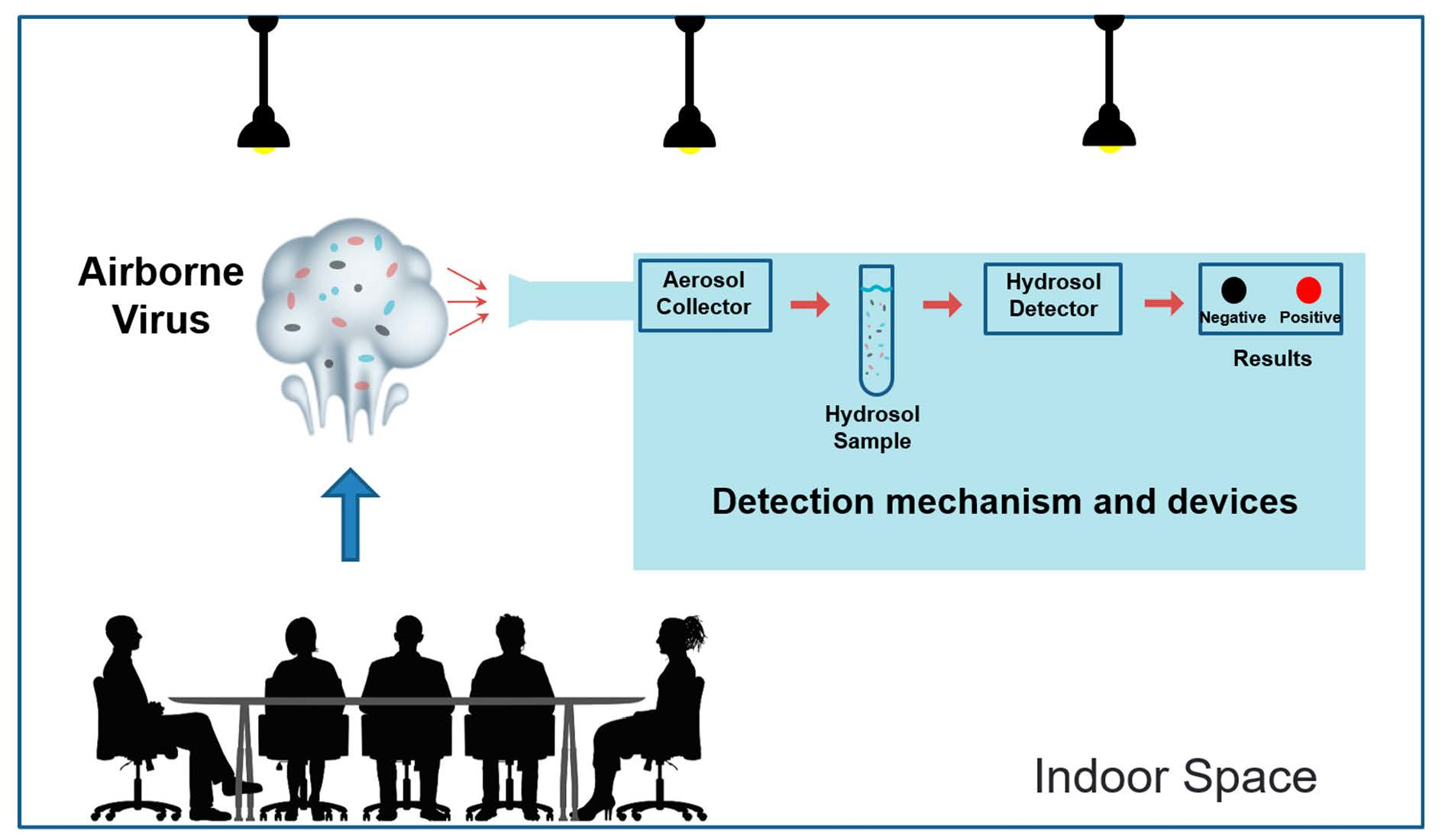Alzheimer’s disease detection has become a pivotal focus in the ongoing battle against neurodegenerative diseases, with researchers striving to find ways to identify individuals at risk before significant cognitive decline occurs. In a groundbreaking study, scientists from Mass General Brigham have revealed that the sense of smell may serve as an early indicator of cognitive impairment. This innovative approach utilizes an olfactory test that allows participants to evaluate their ability to identify and remember smells, effectively serving as a smell test for Alzheimer’s. The implications of such early detection are profound, as they can lead to timely interventions for those at risk of Alzheimer’s disease. By harnessing easy-to-administer cognitive impairment tests at home, this research not only opens doors for personal insights into brain health but also sets the stage for wider applications in identifying neurodegenerative conditions.
The identification of cognitive challenges in aging individuals, especially concerning conditions like Alzheimer’s disease, relies increasingly on innovative assessment methods. In recent research, a novel olfactory assessment, a type of smell evaluation, has shown promising potential as a diagnostic tool for early signs of cognitive decline. This home-based smell test for Alzheimer’s and similar neurodegenerative disorders aims to uncover subtle changes in sensory perception that might indicate wider cognitive issues. By prioritizing user-friendly cognitive evaluation tests, researchers intend to empower individuals with knowledge about their brain health far in advance of any noticeable symptoms. These advancements mark a significant step toward enhancing early detection strategies for Alzheimer’s and other related conditions.
Understanding Olfactory Tests for Early Alzheimer’s Disease Detection
Olfactory tests are emerging as a groundbreaking tool in the early detection of Alzheimer’s disease. These non-invasive tests assess an individual’s ability to identify, discriminate, and remember different smells. Research from Mass General Brigham highlights the significance of smell loss as an early warning sign of cognitive impairment. Participants who took the olfactory test at home demonstrated varying abilities based on their cognitive health, with those experiencing early symptoms of Alzheimer’s scoring notably lower. By employing these tests, health professionals can pinpoint individuals at risk for Alzheimer’s long before memory-related symptoms manifest.
The use of smell tests in detecting early signs of neurodegenerative diseases such as Alzheimer’s brings new hope to the field of cognitive health. Traditional cognitive impairment tests often require specialized environments, but olfactory tests can be conducted efficiently at home. This accessibility increases the likelihood of early diagnosis and intervention, which is crucial for effective management of Alzheimer’s. As our understanding of the connection between olfactory dysfunction and neurodegenerative diseases expands, these tests may become standard practice in clinical settings.
The Role of Cognitive Impairment Tests in Alzheimer’s Research
Cognitive impairment tests are essential in Alzheimer’s research, as they provide a framework to evaluate mental functioning and memory skills. Researchers are now exploring how tests, including olfactory assessments, can complement traditional cognitive tests to provide a more comprehensive overview of an individual’s cognitive health. This multidimensional approach enhances the ability to detect Alzheimer’s disease at an earlier stage, allowing for timely interventions that could slow its progression. With advancements in technology and testing methods, combining olfactory tests with other cognitive evaluations shows promise in achieving better outcomes for patients.
As clinical research into Alzheimer’s disease continues to evolve, cognitive impairment tests serve as a vital tool in both diagnostics and treatment strategies. Integrating olfactory testing with other neuropsychological assessments can yield valuable data on how cognitive decline unfolds over time. This data is crucial not only for understanding the trajectory of Alzheimer’s but also for identifying preventive measures that can be taken before the onset of debilitating symptoms. Ongoing studies will help validate these tests and refine their applications within broader clinical settings.
Exploring the Connection Between Smell and Neurodegenerative Diseases
Research has revealed a fascinating correlation between olfactory performance and neurodegenerative diseases, particularly Alzheimer’s. The ability to perceive and identify odors is linked to the integrity of brain regions associated with olfactory processing, which are often among the first to be affected in neurodegenerative conditions. The loss of the sense of smell may not only signal Alzheimer’s disease but also other conditions such as Parkinson’s disease and chronic traumatic encephalopathy. Understanding this connection can lead to earlier diagnoses and customized care strategies for affected individuals.
As scientists delve deeper into the relationship between smell and neurodegenerative diseases, they are finding that the subtle changes in olfactory function could be invaluable for predicting cognitive decline. The development of at-home olfactory tests represents a significant breakthrough that could facilitate widespread early detection. By measuring an individual’s ability to discriminate and remember scents, researchers hope to develop a larger screening tool that can eventually integrate with cognitive assessments to identify those who may be at risk of developing conditions like Alzheimer’s.
The Significance of Early Detection in Alzheimer’s Disease
Early detection of Alzheimer’s disease is crucial for several reasons, including the potential for timely intervention and improved patient outcomes. Evidence suggests that when cognitive impairment is identified in its early stages, patients may benefit from lifestyle changes, medication, and supportive therapies that help slow the disease’s progression. Tests that can accurately predict Alzheimer’s risk, such as olfactory assessments, are becoming increasingly valuable in clinical practice as they provide actionable information that can empower patients and families.
Moreover, early detection allows for better resource allocation in healthcare systems, providing support that is more suited to an individual’s needs before significant decline occurs. The development and validation of cost-effective and easy-to-use detection methods, like at-home olfactory tests, open doors for broader population screenings. These tools can lead to more informed healthcare decisions and foster a proactive approach to managing Alzheimer’s disease.
Cultural Considerations in Alzheimer’s Disease Detection
Cultural factors play a significant role in the detection and management of Alzheimer’s disease. The olfactory tests developed for this research have been shown to be effective across diverse populations, including English and Spanish speakers. This aspect is critical for ensuring that cognitive impairment tests are accessible to different demographics, thereby improving early detection rates in communities that may otherwise experience disparities in healthcare. By accommodating language and cultural nuances in the testing process, researchers can enhance the reliability and accuracy of assessments.
Additionally, understanding cultural perspectives on aging and cognitive decline can shape how Alzheimer’s symptoms are perceived within various communities. Education about neurodegenerative diseases and the importance of early detection can encourage individuals from all backgrounds to participate in cognitive and olfactory testing. Raising awareness and fostering acceptance of these tests can promote proactive health behavior, leading to better outcomes for individuals at risk of Alzheimer’s disease.
Advancements in At-Home Alzheimer’s Disease Tests
The advent of at-home testing for Alzheimer’s disease signifies a transformative shift in how we approach cognitive health. The olfactory tests developed by researchers at Mass General Brigham demonstrate that individuals can effectively assess their risk for Alzheimer’s from the comfort of their homes. This innovation not only makes the testing process more convenient but also helps to destigmatize cognitive health assessments, encouraging more people to seek evaluation without the anxiety often associated with clinical environments.
By facilitating at-home testing, researchers aim to increase adherence to cognitive health monitoring, allowing for consistent tracking of changes over time. This approach also lowers the financial barriers associated with frequent visits to clinics or specialists, making it more feasible for individuals to remain vigilant about their cognitive function. As at-home tests gain traction, they will likely become a standard component of Alzheimer’s research and public health initiatives, providing vital data for future studies.
Benefits of Using Smell Tests in Clinical Settings
Incorporating smell tests into clinical settings presents multiple benefits for healthcare providers and patients alike. These non-invasive tests can complement traditional cognitive assessments, providing deeper insights into an individual’s neurological health. By measuring olfactory function, healthcare professionals can gather additional data that may enhance diagnostic accuracy and inform treatment plans. These assessments can also facilitate early discussions about cognitive health with patients, preparing them for potential future challenges.
Furthermore, smell tests can be easily administered and translated across various languages and cultural backgrounds, allowing for inclusive and comprehensive evaluations. As researchers continue to validate these tests, they have the potential to become a routine part of cognitive health screenings, ensuring that early indicators of Alzheimer’s are not overlooked. The integration of smell tests in clinical practice promises to improve the overall standard of care for individuals at risk of neurodegenerative diseases.
The Impact of NIH Funding on Alzheimer’s Research
Funding from the National Institutes of Health (NIH) plays a pivotal role in advancing research on Alzheimer’s disease and related cognitive impairments. Such support enables teams like those at Mass General Brigham to explore innovative approaches like olfactory testing, which would otherwise face financial barriers. NIH investments have encouraged researchers to push the boundaries of detection techniques and develop new methods for identifying individuals at risk for Alzheimer’s as early as possible.
Moreover, NIH funding fosters collaboration among institutions, allowing researchers to share data and resources, thereby enhancing the overall quality of Alzheimer’s research. By prioritizing studies that aim for early detection, like olfactory assessments, the NIH helps to steer the focus towards actionable interventions that could significantly improve the quality of life for those at risk. Continued funding and support are essential for unlocking new discoveries and addressing the growing impact of Alzheimer’s disease on public health.
Future Directions for Alzheimer’s Disease Research and Detection
Looking ahead, the future of Alzheimer’s disease research lies in the integration of innovative testing methods alongside traditional diagnostics. As olfactory tests gain recognition for their effectiveness in identifying early cognitive impairment, the quest for a multi-faceted approach to Alzheimer’s detection is gathering momentum. Researchers envision a future where various non-invasive tests, including smell assessments and cognitive evaluations, work in tandem to provide a clearer picture of an individual’s cognitive health.
Additionally, continued exploration into neurodegenerative diseases will likely lead to the identification of novel biomarkers and testing methodologies. The potential for personalized detection and treatment pathways can significantly alter the landscape of Alzheimer’s disease management. As scientists learn more about the complexities of brain health and disease, the hope is that early detection methods – especially those that are accessible and easy to perform – will become commonplace, fundamentally improving outcomes for individuals at risk for Alzheimer’s.
Frequently Asked Questions
What is the role of olfactory tests in early detection of Alzheimer’s disease?
Olfactory tests are emerging as a vital tool for the early detection of Alzheimer’s disease. Recent studies indicate that the ability to identify and remember smells may decline in individuals with cognitive impairment, including those at risk for Alzheimer’s. By using at-home smell tests, researchers can assess olfactory dysfunction, potentially identifying neurodegenerative diseases years before typical memory symptoms arise.
How can an at-home smell test help in Alzheimer’s disease detection?
An at-home smell test, also known as an olfactory test, can aid in the early detection of Alzheimer’s disease by evaluating a person’s ability to discriminate and identify various odors. Research has shown that older adults with cognitive impairment tend to score lower on these tests compared to cognitively normal individuals, making it a promising noninvasive method for screening those at risk for Alzheimer’s.
What are the benefits of using cognitive impairment tests for Alzheimer’s disease detection?
Cognitive impairment tests, including olfactory tests, offer numerous benefits for early detection of Alzheimer’s disease. They are cost-effective, noninvasive, and can be conducted in familiar home environments. Identifying cognitive decline early allows for potential interventions and research advancements, providing hope for improved management of neurodegenerative diseases.
How does olfactory dysfunction relate to neurodegenerative diseases like Alzheimer’s?
Olfactory dysfunction has been associated with several neurodegenerative diseases, including Alzheimer’s. The loss of smell can serve as an early warning sign, as studies have shown that older adults with conditions like cognitive impairment often demonstrate diminished odor identification and memory skills. This link highlights the potential of smell tests in Alzheimer’s disease detection.
Can olfactory tests predict cognitive decline related to Alzheimer’s disease?
Yes, olfactory tests may predict cognitive decline associated with Alzheimer’s disease. Research indicates a correlation between lower scores on smell discrimination tests and increased risk for neurodegenerative diseases. Future studies are needed to validate olfactory testing as a reliable early detection method while monitoring patients over time for cognitive changes.
What is the Aromha Brain Health Test and its significance in Alzheimer’s detection?
The Aromha Brain Health Test is an olfactory test used in research to assess the ability to identify and remember smells. This test holds significance in Alzheimer’s disease detection as it may help identify individuals at risk of cognitive decline and neurodegenerative diseases based on their olfactory performance, paving the way for earlier interventions.
| Key Points |
|---|
| Researchers at Mass General Brigham have developed an at-home olfactory test to detect Alzheimer’s disease risk. |
| The test assesses the ability to discriminate, identify, and remember smells using odor labels on a card. |
| Older adults with cognitive impairment performed worse on the test compared to cognitively normal adults. |
| The study highlights olfactory dysfunction as a potential early warning sign for neurodegenerative diseases. |
| Participants from various backgrounds (English and Spanish) performed equally on the test, indicating its broad applicability. |
| The findings are encouraging for future clinical settings and research focusing on Alzheimer’s disease detection. |
Summary
Alzheimer’s disease detection is crucial for timely intervention, and recent research indicates that olfactory tests could be a key tool in identifying those at risk long before notable symptoms appear. By leveraging the sense of smell, researchers aim to create accessible methods for early diagnosis, potentially transforming the future of Alzheimer’s disease management.


